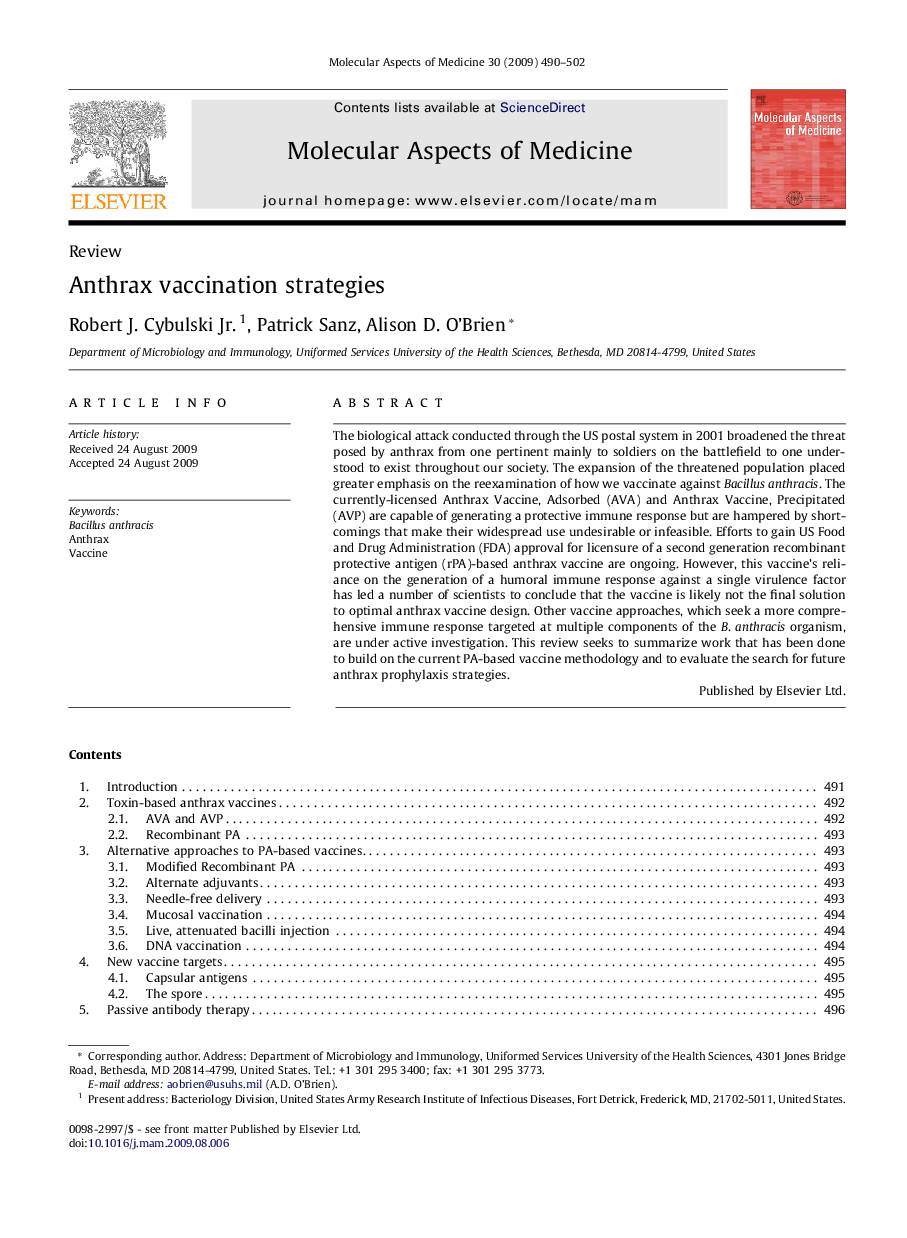| Article ID | Journal | Published Year | Pages | File Type |
|---|---|---|---|---|
| 1995755 | Molecular Aspects of Medicine | 2009 | 13 Pages |
The biological attack conducted through the US postal system in 2001 broadened the threat posed by anthrax from one pertinent mainly to soldiers on the battlefield to one understood to exist throughout our society. The expansion of the threatened population placed greater emphasis on the reexamination of how we vaccinate against Bacillus anthracis. The currently-licensed Anthrax Vaccine, Adsorbed (AVA) and Anthrax Vaccine, Precipitated (AVP) are capable of generating a protective immune response but are hampered by shortcomings that make their widespread use undesirable or infeasible. Efforts to gain US Food and Drug Administration (FDA) approval for licensure of a second generation recombinant protective antigen (rPA)-based anthrax vaccine are ongoing. However, this vaccine’s reliance on the generation of a humoral immune response against a single virulence factor has led a number of scientists to conclude that the vaccine is likely not the final solution to optimal anthrax vaccine design. Other vaccine approaches, which seek a more comprehensive immune response targeted at multiple components of the B. anthracis organism, are under active investigation. This review seeks to summarize work that has been done to build on the current PA-based vaccine methodology and to evaluate the search for future anthrax prophylaxis strategies.
